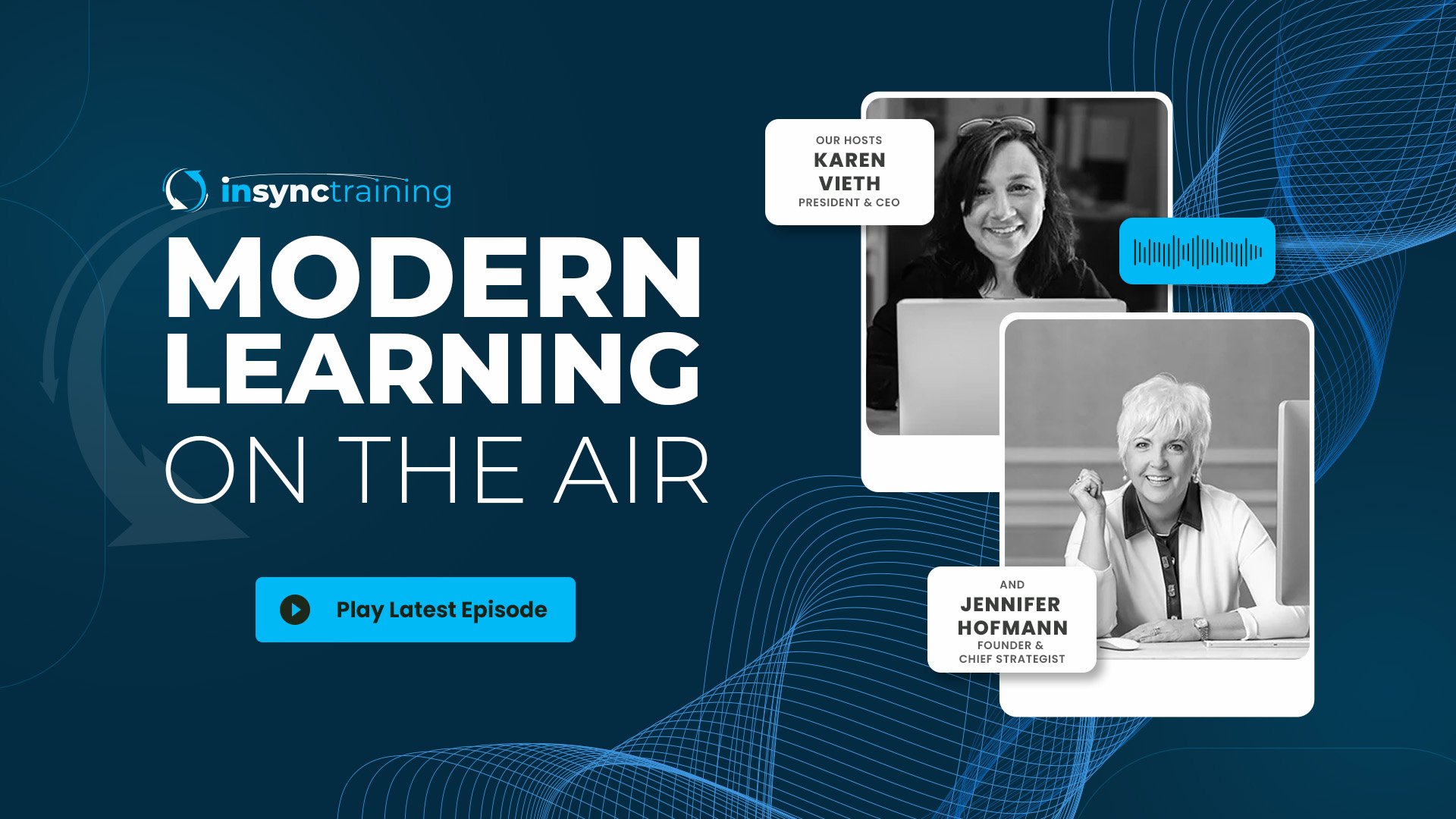5 min read
Managing Virtual Teams: Embracing Hybrid Workforce Trends
 Jennifer Lindsay-Finan
:
Jan 16, 2023 5:53:00 PM
Jennifer Lindsay-Finan
:
Jan 16, 2023 5:53:00 PM

5 Recommendations to Maximize the Learning Experience, and What Virtual Learning Experts® Need to Know
This is part of an ongoing column by Virtual Learning Expert Jennifer Finan. She’s exploring trends that impact virtual classroom trainers and designers to improve learner engagement in the hybrid virtual classroom.
A Hybrid Workforce Means Hybrid Training
As we all saw, the pandemic forced many workers to work from home. Recently, many organizations who switched to leading remote teams are once again opening their doors to encourage employees to return to the workplace. Some employees and organizations are more willing to return to the office than others. Gallup recently reported about 53% of ‘remote-capable’ employees expecting a hybrid working arrangement with 25% expecting to work entirely remotely.
With this trend in hybrid working becoming more like our new normal, many organizations expect their learning and development teams to adopt the same approach for managing virtual teams and hybrid employees.
What Do We Mean by "Hybrid Is the New Blended" And Why Is It Trending?
Let’s break down the concept of "hybrid is the new blended". Hybrid means the learner environment including where they are and how they’re interacting with the learning experience. Blended means the delivery of technology and content. Blended programs include live classes on a virtual learning platform for learners in the office or working from home as well as other resources and activities that learners typically work through asynchronously.
In the modern workplace, our people work in different environments every day. Whether it be at home, in the office, or elsewhere, many employees are learning while also working at different times of day through various mediums. To best foster these factors into virtual learning strategies, we need our learning programs to be both hybrid and blended.
What Impact Does Hybrid Blended Training Have on Learner Engagement?
When it comes to learner engagement, the key with hybrid training programs is to ensure proper learning facilitation so that no learner gets left behind regardless of where they are learning from. It’s equally important when leading virtual teams and hybrid teams that every learner has everything they need to fully participate and contribute to the learning experience no matter where they are or what kind of device they’re using. When it comes to hybrid blended programs, it’s important to consider both the live classes and the rest of the learning blend.
The Environmental Dimension Of Live Hybrid Classes
The biggest impact on learner engagement is the environmental dimension. After all, it is the main difference among learners. Some learners will be in the same room as each other experiencing the same learning environment, while others are joining from various remote locations and learning under a completely different set of circumstances.
Imagine learners in the same physical space. Their learning environment might consist of watching a presentation on a projector while listening through speakers. Perhaps they have a microphone in the middle of the table or a webcam trained on them. They may have teas, coffees, and cakes on hand with pens, notebooks, and sticky notes scattered around the room. Other colleagues are likely working around them. Learners may also be conducting training in a designated room where they don’t need to think about how much noise they’re making.
That environment is not the same as face-to-face training. They’re likely being heard or seen by others who are working remotely and not in the room. When it comes to engaging online learners and in-person learners, they’ll all be aware of the differences in their respective training environments. In-person participants can’t speak as they would if everyone were together because the virtual participants won’t hear them well enough. They also can’t stand up and walk over to the coffee pot without virtual participants wondering where they’re going.
How Hybrid Learning Differs from Virtual Learning
Hybrid learning differs significantly from fully remote virtual training as well. Virtual in-person learners can’t annotate on the whiteboard or ask questions in the chat if there’s only one keyboard sitting out of reach of everyone. As you can see, it’s a different learning environment which impacts how each type of learner engages in the experience. If they can’t easily engage and contribute to the learning experience, it will result in a negative impact on their intellectual and emotional engagement as well.
Now imagine the virtual learners. They’re all joining from various locations including home, another office, a warehouse, a car, or elsewhere. Remote learners join online training from different devices from PCs and Macs to tablets and phones which may impact overall user experience if not properly designed. The various hybrid learning environments could be very different, but they’re not the same as regular virtual training. They may constantly be thinking about what they’re missing out on because they’re not in the same room as their in-person colleagues. Combining all of this with the possibility that learners may join from different locations and devices on different days during the program can make engaging online learners a difficult endeavor.
The Importance of Environmental Engagement in Live Hybrid Classes
We know that when environmental engagement is impacted, it impacts the other engagement dimensions, so we need to get it right.
For a start, the technology could be different from what the learner is used to. For example, If learners are in a room together sharing audio, can they still access chat to ask questions? Can they still use private chat to ask for help privately? If that means learners need to join from a phone as well, what do they need to know about navigating the virtual learning platform on a mobile?
If environmental engagement is not managed properly, it will negatively impact emotional engagement. This often occurs in the form of feelings of exclusion. Learners will know if there are side conversations taking place in the room that they’re not privy to which can deter them from engaging and contributing. Their engagement will also be impacted if they feel that the facilitator can’t see them as well as they see the learners right in front of them. Intellectual engagement will suffer if learners can’t contribute at the same levels as others. Engagement will also be negatively impacted if they’re not hearing or seeing everything that’s happening and therefore can’t collaborate with certain people.
Asynchronous Components in a Hybrid Workplace
It’s not all about the live classroom events. Remember this is about blended learning, so we need to ensure ALL the elements of the in-person and virtual learning programs are designed to ensure no learner gets left behind. This could be achieved by providing a space like a forum for learners to communicate in between the live events. Having a community learning forum and consistently directing people to it encourages learners to share their work with everyone and not just those in the office. If there is no space for communication, learners may resort to talking about it in passing at the office excluding remote employees from the ongoing conversation.
We also want to design hybrid training in a way that allows learners to contact management when they need help. This is especially important when navigating the LMS for the first time. Those in shared office space have the benefit of being able to speak up and ask each other where to find the materials. However, someone working from home that day may give up if they can’t find it quickly or can’t easily contact the instructional team for help. This results in lower satisfaction among hybrid employees and decreased productivity from the hybrid workforce.
Learn More About Hybrid Learning and Teaching Tools For Virtual Classrooms
Get moving on your year-end professional development journey. Maximize audience engagement and merge the concepts of blended learning and hybrid learning with creative ways to engage students online. Our Virtual Learning Strategies for the Hybrid Workforce certificate will help you become an expert in virtual training strategy for today's global blended work environment.
Tap the image below to learn more!

7 Considerations When Implementing a Hybrid Virtual Learning Strategy
Mastering Hybrid Learning In May 2023, the Wall Street Journal reported that the number of companies requiring employees to work full-time in the...

Making Hybrid Work
The hybrid work model has been increasing in adoption since the pandemic. The analysis of thousands of tasks and jobs across multiple countries...

